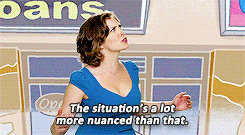Multidimensional Computing Accessibility in the Age of XR and AI
Does a dimension imply existence within space? That was the conversation that emerged this morning when I sat down with Kent Bye to talk about the philosophy and ultimate potential of computing. To me, dimensionality is more about characteristics and measuring in general, independently of the concept of “space”, but fortunately, my talk at the 2023 XR Access Symposium gets into the contextualization of dimensionality, and how it relates to the future of computing. To quote Kent, let’s dive in!
Today, I’m sharing the slides that I prepared for my talk at the 2023 XR Access Symposium. In building this presentation, I had a few goals – the first was to establish my own new paradigm for talking about XR and AI. I found that “multidimensional computing” encompassed both of those characteristics nicely, especially when we think through the vast amount of information that is built into each of those types of technology. Is it a bit wordy, as far as terminology goes? Absolutely, and frankly, I love it even more for that. I was surprised to find that a quick Google search didn’t return many established uses of the term, but that’s okay – language is dynamic and constantly evolving. If you enjoy the term and how it encompasses XR and AI, please join me in using it.
A secondary goal that I had was to try and articulate the importance of thinking across spectrums when it comes to building accessible computing systems. I love spectrums and non-binary thinking: after decades of believing in a singularly constructed reality, I’ve been fascinated by the emergent model of thinking that we can break out of our pre-programmed nature of constructing solidly-bound concepts and into a new state of thinking that embraces quantum principles. While our brains and bodies exist in a singularly constructed space, our minds, thoughts, and expressions are able to exist infinitely with the advent of multidimensional computing.
The third goal that I had was to try communicating with math as an analogy. We think of math as being a fixed, foundational, and challenging – but in practice, there are many fields of endeavor in which math becomes more accessible. I recently had a delightful conversation with the chief executive of the Topos Institute (who is hiring, btw!) about the way that mathematics fundamentals have downstream effects on the anthropological and societal structures, and it made me realize that I have shied away from using math as a mechanism and tool for communicating. This presentation was an opportunity to practice that.
There is a common phrase that is used when discussing autistic individuals: “If you’ve met one person with autism, you’ve met one person with autism.”[1] This phrase is meant to articulate the vast differences in the ways that autistic individuals experience the various challenges in their model of viewing and existing in the world. It doesn’t just apply to autism. It applies to virtually every single way that each and every one of us exist.
One reason that I like the idea of breaking dimensionality out of the “spatial” world to encompass more qualitative measures is that it recognizes how nuanced our ideas of measurement and metrics actually are.

Accessibility is all about nuance. It’s about context. It’s about empowering people with tools to maintain agency and create their own experiences that reflect their lived experiences. If we go straight to the source of computer science fundamentals – and math – then we can perhaps re-imagine the way that we think about who builds and owns the software that we use as tools for access to humanity’s collective knowledge.
The last goal that I had – the one that overarches all of my work – was to encourage a way of thinking that centers agency and ability to act. Too often, at least in western culture, we are taught helplessness at various points of our social existence. Sometimes it is due to lack of access to resources. Sometimes it is due to an intentional or unintentional silencing of voices. Right now, I’m a bit jaded on the fact that it’s largely due to keep those with power in a position of maintaining control.
But, I’m hopeful that if my message through this talk can reach and help just one person, then I’ve done my job. I know that I will never be able to quantify my impact on the world, but it is the dimension that I most closely align to when I think about how to construct my days and the way that my brain spends its limited time on this planet.
[1] When discussing autism and other neurodivergency and disability conditions, it’s important to recognize and grant agency in how each individual chooses to self-identify. In this case, I used both people-first (“person with autism”) and identity-first (“autistic”) because I use both of them. Some people prefer people-first language exclusively, and some people prefer identity-first language exclusively. I use both for myself, and share this to explain the context behind when one or the other may be preferred.